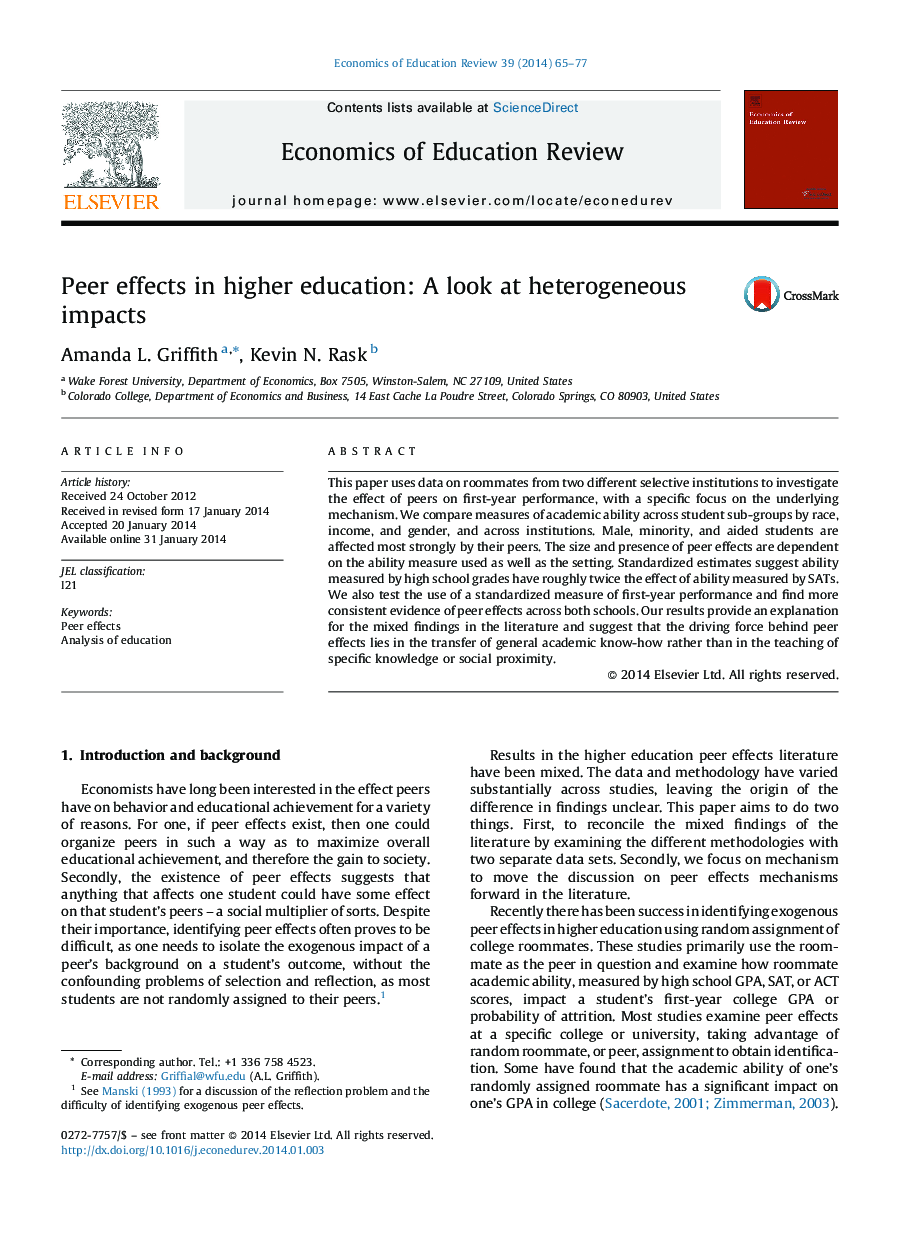| Article ID | Journal | Published Year | Pages | File Type |
|---|---|---|---|---|
| 354343 | Economics of Education Review | 2014 | 13 Pages |
•Mixed findings in literature due to different measures of peer ability used.•Results suggest peer effects more likely at smaller institutions.•Findings highlight the importance of outcome choice on findings in the literature.•We provide new evidence for a more general mechanism for peer effects.•Peers have strongest effect on male, aided, and low-ability students.
This paper uses data on roommates from two different selective institutions to investigate the effect of peers on first-year performance, with a specific focus on the underlying mechanism. We compare measures of academic ability across student sub-groups by race, income, and gender, and across institutions. Male, minority, and aided students are affected most strongly by their peers. The size and presence of peer effects are dependent on the ability measure used as well as the setting. Standardized estimates suggest ability measured by high school grades have roughly twice the effect of ability measured by SATs. We also test the use of a standardized measure of first-year performance and find more consistent evidence of peer effects across both schools. Our results provide an explanation for the mixed findings in the literature and suggest that the driving force behind peer effects lies in the transfer of general academic know-how rather than in the teaching of specific knowledge or social proximity.
